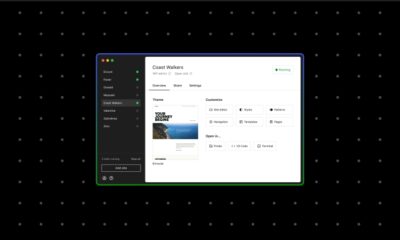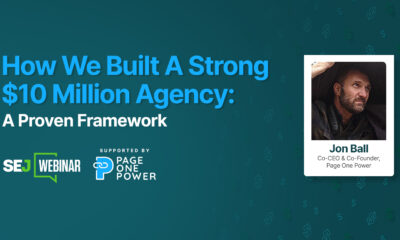SOCIAL
The Development of Roblox Provides a Framework for the Metaverse Vision

As the metaverse hype cycle continues to churn, and profiteers seek to capitalize on the early knowledge gap, the truth is that we’re still a long way off being able to interact and engage in a fully-immersive, fully-functional digital space
But we do already have basic templates for what the metaverse may look like, in game worlds like Roblox, where youngsters interact via digital avatars, and move from experience to experience in a 3D environment, all of which is increasingly designed by users, in all aspects.
And with those younger audiences now growing up, Roblox is looking to take its in-world experiences to the next level, with new ad types and branded content experiences, and improved visual elements, all designed to appeal to older consumers.
Which is worth noting, both as an immediate ad option (Roblox has over 52 million engaged active users), but also, again, as a template for what’s coming, and how brands could consider their own metaverse experiences and approaches in the next stage.
First off, Roblox is rolling out new interactive billboards and posters within its virtual worlds, providing a new way for brands to connect with Roblox users in specific experiences – and for Roblox creators to make money.
As reported by The Verge:
“Working initially with a group of selected companies and developers, the new ad system will allow creators to drop 3D ads into their own experiences – like a billboard in a sports stadium or on top of a cab in a game – and to get a cut of the ad revenue.”
As noted, much of the Roblox experience is now created by the user community, with external developers building their experiences on the Roblox engine – which is exactly how Meta’s metaverse vision will also come together.
Meta already has its own Horizon Worlds virtual sandbox environment, which could theoretically replicate the Roblox experience, but in VR instead.
You can see, then, how similar ad offerings could help to support VR creators working in the space, with Meta then hosting the party as more and more VR creators come across and build entire worlds in its virtual realm.
That’s Zuckerberg’s dream, that eventually, Meta will be the dominant player in this emerging VR world, which will force all creators and brands who also want to take part to build on its tools, securing Meta’s future as the key facilitator of the metaverse experience.
As much as Meta is keen to say that no one company will own the metaverse, that’s exactly what it’s aiming to achieve. And even if it doesn’t dominate the space, as such, it’ll likely dominate VR headset sales, and advanced social connection in the space.
In this sense, Roblox actually provides a solid, working, small-scale example of Meta’s metaverse vision – which is another reason why it’s worth noting its latest developments.
Brands on Roblox will also soon be able to add ‘portals’ in Roblox experiences, which will transport users from one world into a branded digital environment.
Brands are also exploring the sale of virtual items in Roblox, as accessories for in-game characters, which is another opportunity for businesses in the virtual space.
Roblox has also outlined its more evolved avatars, coming soon, which look much more like the metaverse avatars we’re seeing on other platforms.

It’s also working on improved motion capture for character animation, another step towards improved avatars in the app.
Better looking avatars, new brand experiences, more digital items. Again, you can see the metaverse vision in small-scale – while Roblox also continues to establish a solid framework for creator payments, with creators able to earn money based on the amount of time users spend in their game or experience. Roblox says that it paid out $538 million to creators via this process in 2021 alone.
You can imagine that Meta would love to implement the same, establishing a revenue share deal that will incentivize top creators to build their own Horizon Worlds VR experience.
That’s how Meta can ensure that its metaverse stays relevant – and again, as with all of these elements, you can see how Meta could use a similar framework, overall, to grow its VR environment.
It remains an uncertain bet. People thus far have been unimpressed by the shared visuals of Meta’s metaverse experience, and if they’re not wowed by the graphics, and the capacity of the space, they’re not going to rush out and buy a VR headset.
This post could end up being a defining moment in Meta’s metaverse development. Despite sinking billions into its VR projects, the current visual depth and detail on display is not amazing, and with Meta also upping the price of its VR headsets due to rising production costs (its coming ‘Cambria’ advanced VR unit will reportedly cost $1000), it remains a hard sell to get the majority of people across, and into its metaverse space, for the time being.
Meta will be looking to counter this at its upcoming Connect VR conference, and it remains confident that immersive VR connection will be the future of social interaction.
Platforms like Roblox are part of the reason for that confidence, and with over half of US kids under 16 engaging in Roblox’s virtual world, you can see why Meta would believe that these types of integrated, immersive experiences will increasingly become the norm for the next generation.
It’ll take time – and definitely, don’t believe those companies that are telling you that the metaverse already exists, or that you need a metaverse strategy right away.
You don’t, but one day, based on how younger users are engaging, and how these digital worlds are transforming social norms, it could well become the next big thing, and it may be that Zuck and Co are right, and we will all be spending hours locked into VR worlds, interacting in all new ways.
There’s a lot that needs to go right for this to happen, but in game worlds like Roblox, Minecraft and Fortnite, you can get a sense of what could be, a sort of scale model for what’s envisioned for the next stage.

















You must be logged in to post a comment Login